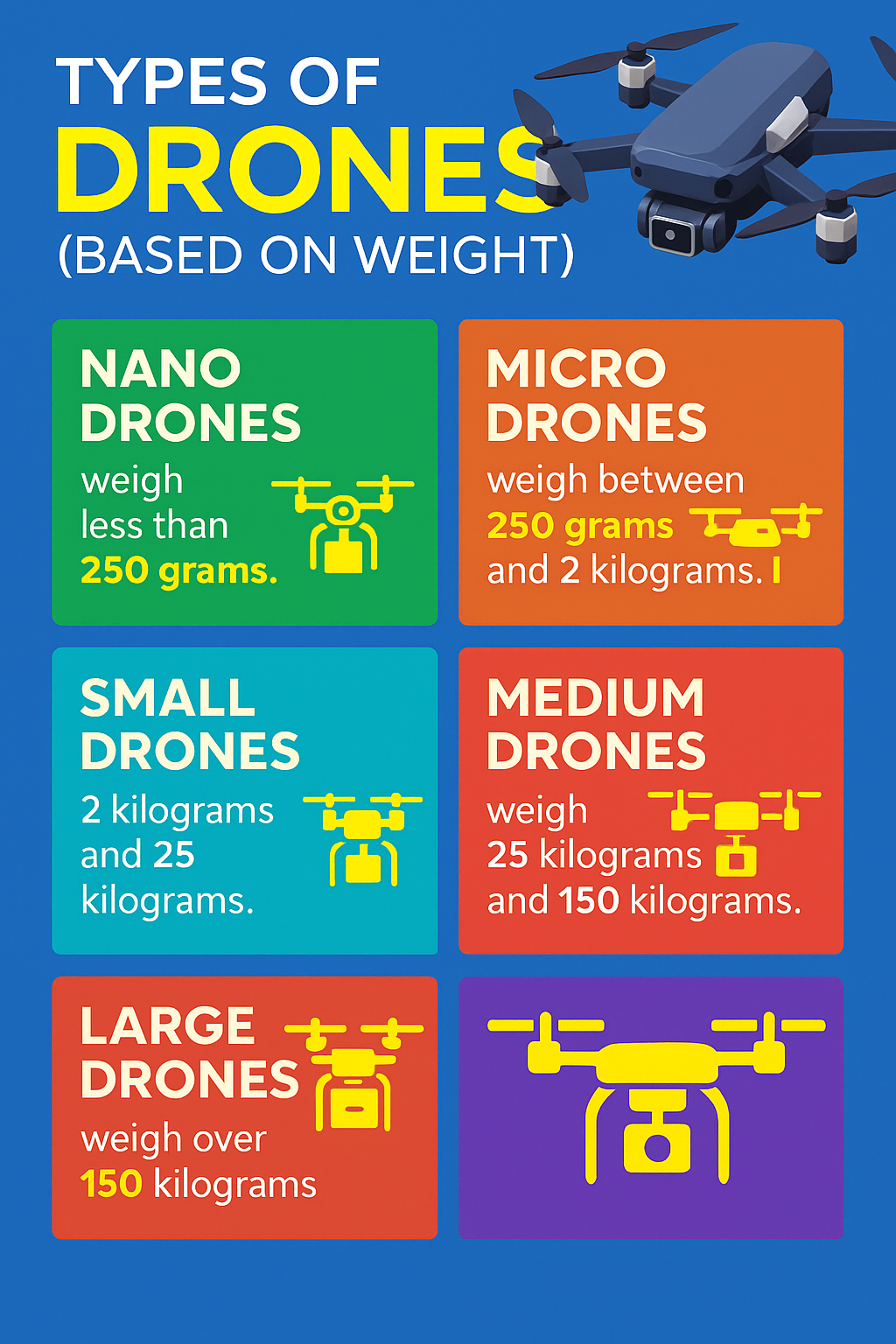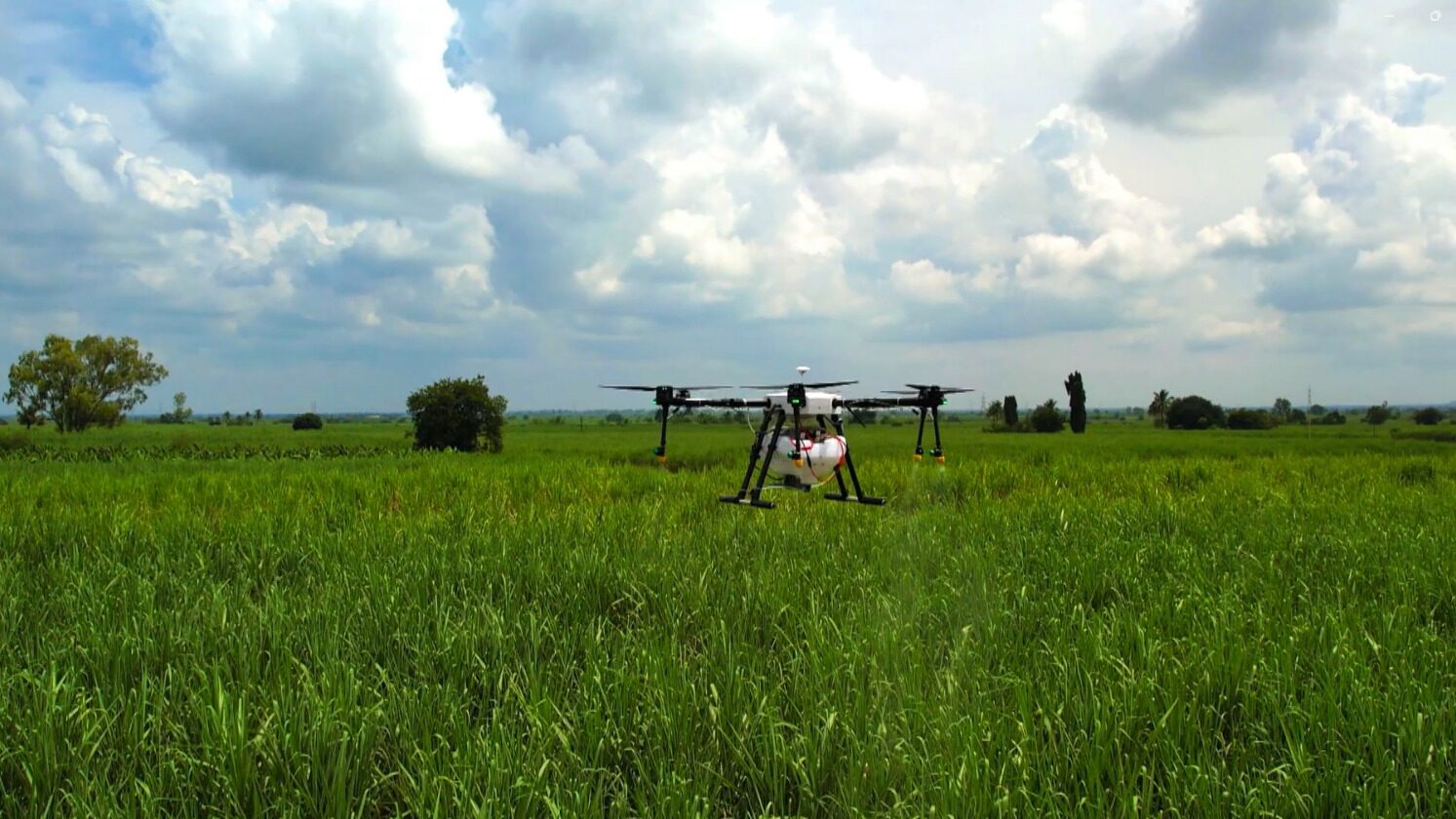In recent years, drones—officially known as Unmanned Aircraft Systems (UAS)—have revolutionized industries from agriculture to cinematography. To ensure safe and regulated use of drones, the Directorate General of Civil Aviation (DGCA) in India classifies drones based on their weight. This classification is critical for drone users, pilots, and businesses, as each category comes with specific rules, training requirements, and operational limitations.
Types of Drones Based on Weight Categories
Let’s take a look at the different types of drones based on their weight:

1. Nano Drones (Up to 250 grams)
Use: Hobby flying, short-range photography, indoor applications
Highlights:
Do not require UIN (Unmanned Aircraft Operator Permit) for non-commercial use
Easiest category to operate
No remote pilot license needed for flying below 15 meters
These ultra-light drones are popular among hobbyists and first-time users. Despite their small size, many nano drones come with high-resolution cameras and smart sensors.
These ultra-light drones are popular among hobbyists and first-time users. Despite their small size, many nano drones come with high-resolution cameras and smart sensors.
2. Micro Drones (250 grams to 2 kg)
Use: Photography, basic surveillance, recreational flying
Highlights:
Requires registration (UIN)
Some restrictions on flying in controlled airspace
Suitable for students, enthusiasts, and media creatorsMicro drones offer a perfect balance between portability and capability. They’re often used by vloggers and surveyors for quick, on-the-go aerial shots.
3. Small Drones (2 kg to 25 kg)
Use: Agriculture, infrastructure inspection, professional videography
Highlights:
Requires Remote Pilot License for commercial operations
Mandatory insurance and compliance with No Permission – No Takeoff (NPNT)
Used in many industrial and research applications
These drones are robust, with long flight times and advanced payload capacities, making them ideal for professionals across multiple sectors.
4. Medium Drones (25 kg to 150 kg)
Use: Cargo delivery, surveillance, large-area mapping
Highlights:
Heavily regulated
Mostly used by government agencies or certified operators
Requires advanced pilot training and airworthiness certification
Medium drones are the workhorses in sectors such as defense, logistics, and large-scale monitoring, where heavier payloads and longer endurance are essential.
5. Large Drones (Above 150 kg)
Use: Military operations, heavy-lift logistics, specialized commercial missions
Highlights:
Treated almost like manned aircraft in terms of regulation
Requires special DGCA approval and airworthiness certification
High cost, advanced technology, and significant infrastructure support
These drones are typically used in defense or by organizations involved in large-scale drone R&D projects. Their use in commercial sectors is still emerging.
For Upcoming drone pilot training program in Pune contact us
